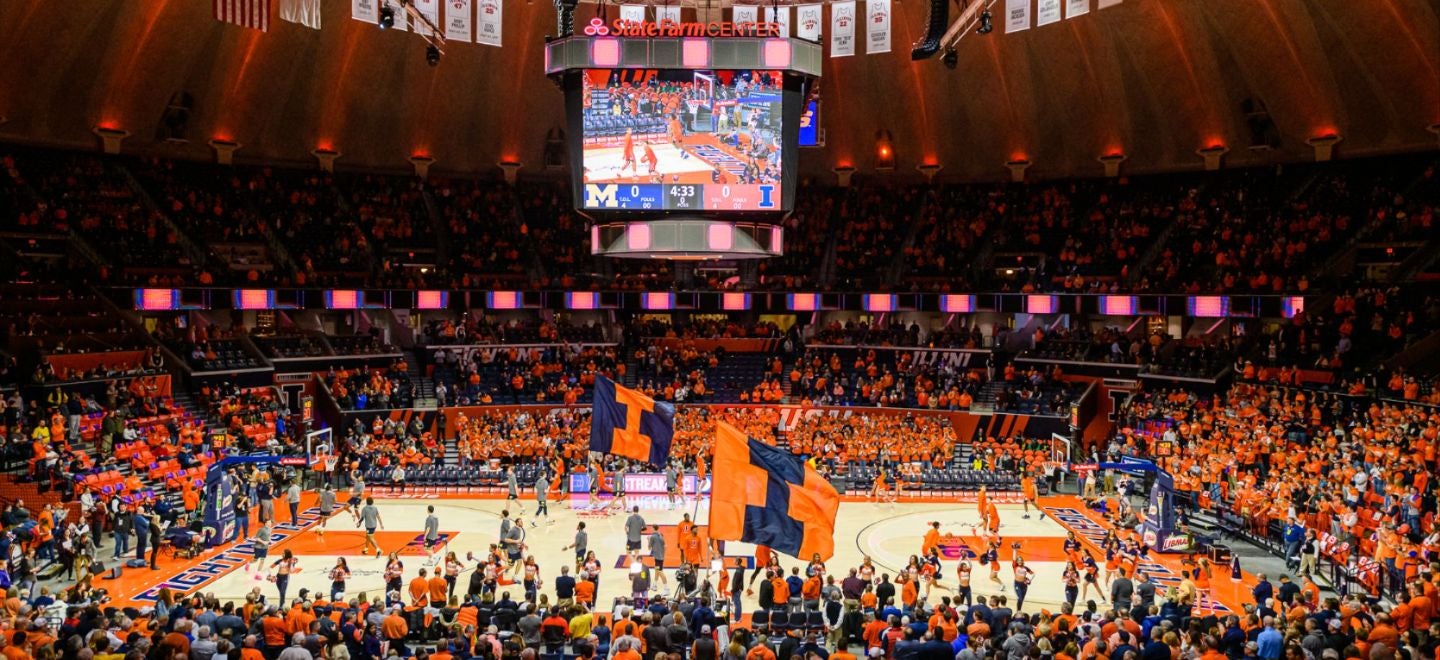Amid Concerns with Larger Class Sizes, Data Shows the Opposite

As Urbana High School students returned to school on August 18 students had several concerns that were talked about throughout the building. This year’s discussions included stricter dress code enforcement, uneven classroom temperatures, and the building construction. One issue that was also discussed a lot was class sizes. Some teachers and students alike gave the impression that they thought the number of students per class had jump. However, school wide statistics give a much different impression.
EDITOR’S NOTE: Check out Meredith Headtke’s article on dress code and Dominique Style’s article on class room temperatures for more about these subjects.
In the 2009- 2010 school year, the average number of students per class at UHS was 13.8 according to the Illinois State Report Cards. The only school with a smaller average class size in the Big 12 was Bloomington, which had an average 13.6 students per class. The average class sizes for the other two twin city schools were much larger- with Central coming in at 22.1 and Centennial at 22.3.
“Teachers from other schools who now work here often talk about how where they came from their classes were much bigger – coming in at 32-38 depending on the subject area,” says UHS Principal Dr. Laura Taylor.
The average class size for the 2010- 2011 school year was slightly bigger at 17.9. “We are fairly certain it will still be among the lowest in the Big 12,” Taylor says.
A couple of years ago UHS had 1340 students and approximately the same number of teachers. Today, there are 1070 students. Just seven percent of classes have 30 or more students, the biggest class, excluding PE, having 32 students.
Some electives and the upper level classes have the most students, but UHS has many specialized elective courses that are fairly small.
Senior Ben Liebersohn says his classes this year are smaller than they have been before. “This year I have slightly more obscure electives and classes with many prerequisites,” he says, which causes the class sizes to be smaller. Liebersohn says his freshman year classes were “huge”, but he’s had less students per class consecutive year.
Many required courses also have a lower number of students than they used to. In 2004, PE classes often had 60 students. Today, most classes are usually in the 30’s, the largest classes having 45 students. This is an improvement that Taylor says is “much safer.”
American Government classes, another required course, have fewer students than they used to. Although the classes still have an average of 27.75 students per class, high for UHS, the numbers are lower than they were in past years when American government classes all had 30 or more students.
Teachers, by contract, can only have up to 165 students each semester (this excludes PE teachers.) At Urbana, the teachers with the most students have 150 per semester, but many have much less than that.
An area where the numbers of students have jumped is in the AP and college prep classes. AP Chemistry has 32 students this year and AP Biology has 27 students. Although 27 is not that big of a class, but is much larger than it has been in previous years.
“I have some very small classes but then some huge classes with 30 or more,” says Senior Kirsten Slaughter, who is enrolled in four AP courses. “From what I have heard many teachers are unhappy about the large class size. It is harder for them to teach with a large class in an environment that is controlled and engaging,” she says.
While not all teachers and students are too pleased with the sizes of their classes, the data shows that course sizes are generally not bigger than they have been in past years.
“I did look through our entire class count and while I do see some sections of classes that are at or just above 30, I don’t see any major differences from this year and last… At the high school level, having 30 in the class is really considered the norm in most schools like ours,” Taylor says.









